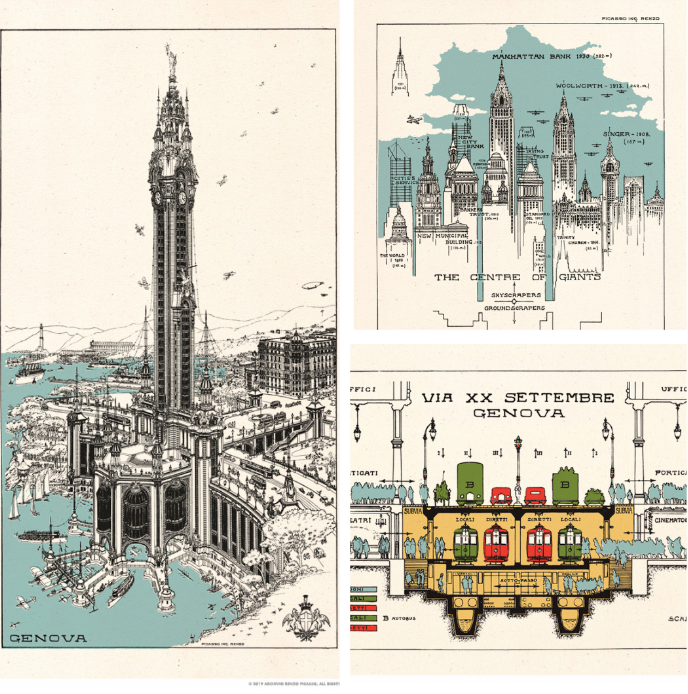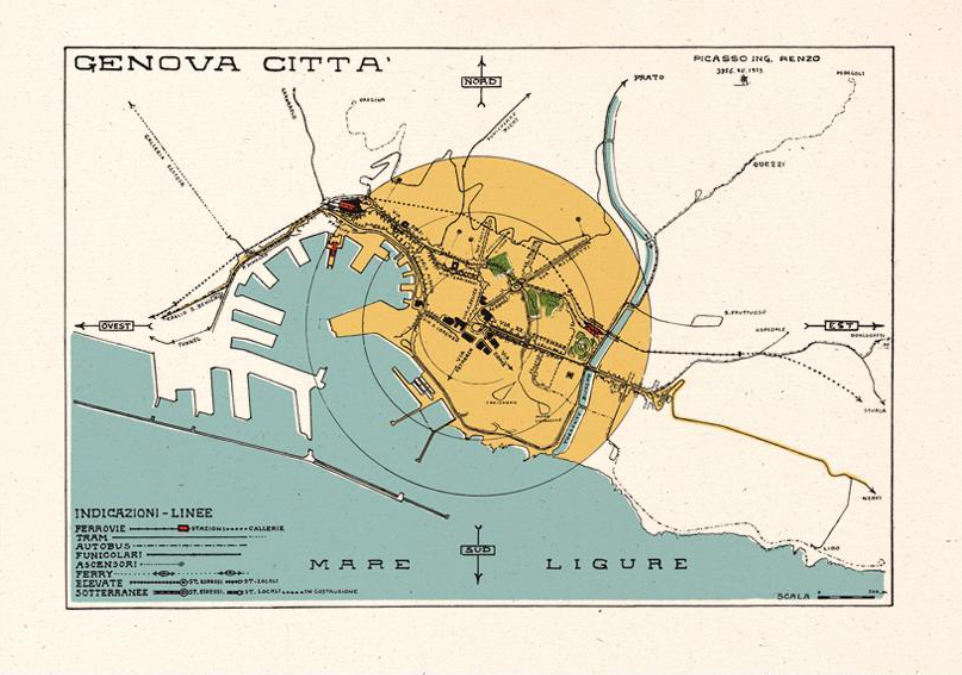Genoa, 1917. For two burdensome years, Italy had been fighting the First World War alongside the Triple Entente. Countless lives and resources were engaged and spent throughout all of Europe. Renzo Picasso was the third architect in his family, a Ligurian household that for generations not only lived and breathed the city but also helped to redesign it: in fact, his father Giovanni contributed to the planning of Via XX Settembre as well as his grandfather Gian Battista to the construction of the barracks behind the Lanterna, a well-known lighthouse.
Young Picasso’s deep-seated pride for his land made him aspire to grow far beyond the settlements of tradition, his dreams of climbing toward the high blue sky on top of his hand-drawn architectural projects. His journey to America, with New York’s sci-fi panoramas and the East Coast’s art deco views, convinced the young artist that Genoa didn’t fall short of cosmopolitan cities such as Chicago or London, all three of them being trade hubs connecting people from all over the world. Already the main port of the newborn Kingdom of Italy and a transit point for goods of all kinds, Genoa had turned into a full industrial capital in the last century thanks to the establishment of cutting-edge metallurgical and steel companies and the efficient connections by train to Turin and Milan. What’s missing for it to resemble the dynamic overseas metropolises is just one thing: the right urban development plan, meaning rapid transportation, towering structures, and elevators. It’s time to roll up the sleeves.

Renzo’s idea is to create a ‘cloud scraper’, what he jokingly calls skyscrapers, on the Carignano waterfront, a fifty-story tower developed along three elemental coordinates: air, land, and sea. It was supposed to be an observatory and maritime station combined, equipped with a modern docking port for transatlantic and seaplanes and offices for citizens. Occasionally the structure could become a convenient theater for authorities watching the national parades, and even a tourist attraction due to the appeal of its aerial views of the bay, terraces, and restaurants.
The “Tower of Peace” (later renamed “Tower of Victory” once the war had been won) was going to be the technical and architectural symbol of an entire nation’s (Liguria’s in particular) momentum towards the future.
Unfortunately, like most of Picasso’s sketches, the project never came to fruition: it is therefore only a future sealed in the past, trapped in inked pages, a missed dream. Nowadays, while looking at the meticulous drawing of the tower one might find ostentatious some ornamental embellishments (like the Statue of Liberty on top) inserted by the architect, but the utopian idea of a technologically and architecturally advanced place that integrates diverse functions and serves as a space in which unlikely meetings are enabled, remains just as revolutionary. The utopian place still aligns with contemporary aspirations to see Genoa reborn through the renewal of its infrastructure.
The Renzo Picasso Foundation still preserved to this day, documentation related to the artist’s futuristic and unrealised projects, including his skillful sketches. You can find some of the marvelous examples here.

